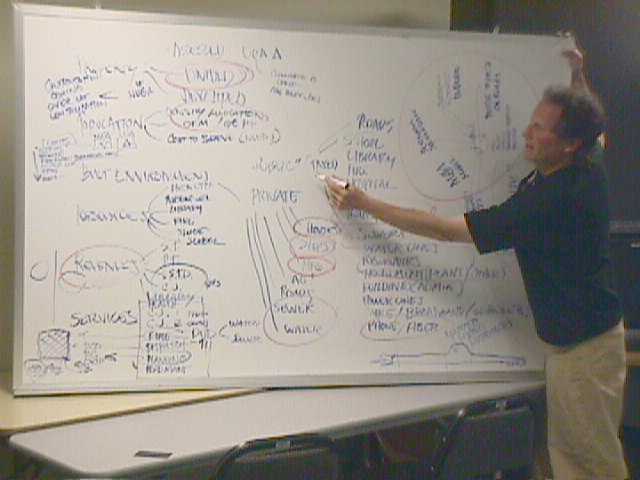George Gibbs' Census
Census of Western Territories Indian Tribes
Gibbs was a Harvard educated geologist/polymath - a linguist who was determined to learn the languages of the west coast Indians. He traveled with Isaac Stevens on the Pacific Railroad survey and then continued with him on the "Treaty Trail, when Stevens met with trinbes to install the treaties that quieted title to the land. I used to have copies of his journals as well as his census. In one journal he bemoaned being confined to the tent while the Treaty was negotiated in Chinook, a trade jargon of 122 words that was substantially lacking in abstract constructs, which he considered preposterous, since in the entourage at that moment was a team of translators capable of accurate real-time communication across the "native" dialects spoken by all of the participants. His census is now online: http://www.wellpinit.wednet.edu/sal-hist/gibbs_toc.php#Q10
"Among their articles of manufacture are blankets and capes, made of the inner bark of the cedar, and edged with fur. Their houses are of considerable size, often fifty to a hundred feet in length, and strongly built. They sometimes place their dead in trees, at others bury them. Their marriages are said to have some peculiar ceremonies, such as going through the performance of taking the whale, manning a canoe, and throwing the harpoon into the bride's house. The superior courage of the Makahs, as well as their treachery, will make them more difficult of management than most other tribes of this region. No whites are at present settled in their country; but as the occupation of the Territory progresses, some pretty stringent measures will probably be required respecting them.
Next to the Makahs are the Clallams, or, as they call themselves, S'Klallams, the most formidable tribe now remaining. Their country stretches along the whole southern shore of the Straits to between Port Discovery and Port Townsend; besides which, they have occupied the latter place, properly belonging to the Chimakum. They have eight villages, viz: Commencing nearest the Makahs, Okeno, or Ocha, which is a sort of alsatia or neutral ground for the runaways of both tribes; Pishtst, on Clallam bay; Elkwah, at the mouth of the river of that name; Tse-whit-zen, or False Dungeness; Tinnis, or Dungeness; St-queen. Squim bay, or Washington harbor; Squa-que-hl, Port Discovery; and Kahtai, Port Townsend. Their numbers have been variously estimated, end, as usual, exaggerated; some persons rating them as high as 1,600 fighting men. An actual count of the last three, which were supposed to contain half the population, was made by their chiefs in January, and, comprehending all who belonged to them, whether present or not, gave a population of only 376 all told.. The total number will not probably exceed 800. That they have been more numerous is unquestionable, and one of the chiefs informed me that they once had one hundred and forty canoes, of eighteen to the larger and fourteen to the smaller size; which, supposing the number of each kind to be equal, gives a total of 2,240 men."
Isaac Stevens' Treaties
But in fact they predate even the U.S. Constitution, because the tribes - at the point in time when the treaties were signed - still held title to the land. Much of this title they knowingly ceded to the US Government. But what is most important to understand is that they RESERVED from what they ceded to the United States certain rights, and therefore what they reserved was never granted and hence, were never available to the US to bestow on its citizens.
The "iron fist" in the Boldt decision is in the conclusion that the Tribal Rights to water (as required for fish habitat) are protected by the U.S. Constitution, and that therefore any claims of the settlers to rights granted through Riparian Doctrine or other basis under the Homestead Act of 1862 or acts that followed it, are not so protected. This is my brutish paraphrase of Fay Cohen's thesis, but I believe that this interpretation is accurate.
Subsequent attempts to reinvent the meaning of this deal, through reinterpretations of Winans and Winters, and the MCarran Amendment need discussion. This is a good place to start talking about it.
Old
Civil War
Homestead Act of 1862
Statehood and Constitution, Riparian Doctrine until replaced by State Surface Water Code 1971
(Some water rights claims vest here)
There is an excellent discussion of the intial problems that were unfolding around water access and water rights in the western states under the Homestead act of 1862, that provides context for understanding the laws that were enacted later, such as Washington's Surface water Code
large ranches to water. In response,
ranchers (themselves or their cowboys) homesteaded prime spots to reserve water
access. At times, tensions escalated into violent conflicts called range wars, for example, the Johnson County
War in Wyoming.
The Homestead Act helped create more than 372,000 farms. By 1900, settlers
had filed 600,000 claims for more than 80 million acres (320,000 km²) of land in
the West under the Homestead Act. The historian Paul Gates has concluded, "their
noble purpose and the great part they played in enabling nearly a million and
half people to acquire farm land, much of which developed into farm homes, far
outweigh the misuse to which they were put". [2]
There was no systematic method used to evaluate claims under the Homestead Act. Land offices would rely on affidavits from witnesses that the claimant had lived on the land for the required period of time and made the required improvements. In practice, some of these witnesses were bribed or otherwise collaborated with the claimant. In any case the land was turned into farms."

No comments:
Post a Comment